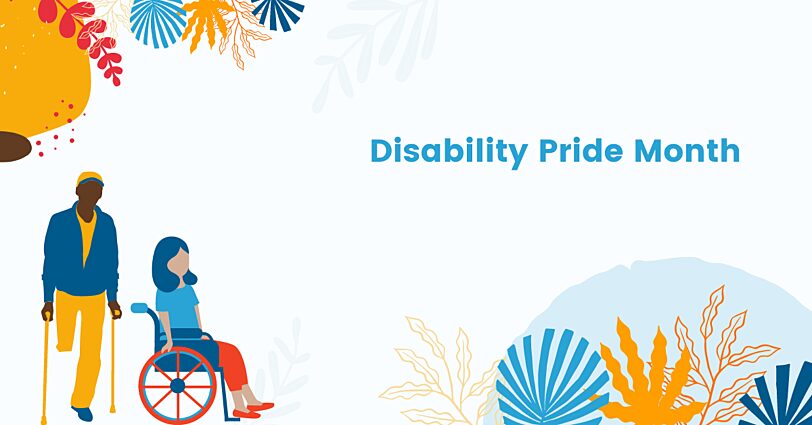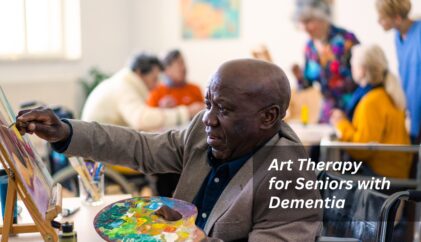
The disability movement eventually led to the legislation that was passed and signed into law on July 26, 1990. Systemic and social barriers still exist, which is one of the reasons Disability Pride Month is recognized every year, to promote awareness and advocate to end all systemic barriers.
How to be an Ally for the Disabled Community - Disability Pride Month
The history of the Americans with Disabilities Act (ADA) began a long time ago - years before the 1990 signing ceremony at the White House. The ADA owes its birthright to the thousands of people who made up the disability rights movement who worked tirelessly to challenge and break down systemic barriers (e.g. segregation in schools, institutionalization, etc.) and discrimination against people with disabilities.
The disability movement eventually led to the legislation that was passed and signed into law on July 26, 1990. Systemic and social barriers still exist, which is one of the reasons Disability Pride Month is recognized every year, to promote awareness and advocate to end all systemic barriers. Disability Pride Month is also celebrated to honor the history of the disability rights movement and to acknowledge and honor the disabled community’s achievements, experiences, and challenges.
How to be an ally to the disabled community
Educate Yourself
According to the CDC, “1 in 4 adults in the United States have a disability.” People of all ages, races, ethnicities, genders, sizes, and shapes have disabilities.
Disability is any condition (impairment) of the body or mind that makes it more difficult for the person to do certain activities and interact with the world around them. There are many types of disabilities such as those that affect a person’s vision, movement, thinking, remembering, learning, communicating, hearing, mental health, and social relationships (CDC, 2020).
Ableism is the discrimination of and social prejudice against people with disabilities based on the belief that typical abilities are superior. According to Eisenmenger, “At its heart, ableism is rooted in the assumption that disabled people require ‘fixing’ and defines people by their disability. Like racism and sexism, ableism classifies entire groups of people as less than and includes harmful stereotypes, misconceptions, and generalizations of people with disabilities” (Eisenmenger, 2019).
Listen to - and learn from - disabled people
Listen to people with disabilities and/or chronic illness. Many times non-disabled people tend to shy away from talking to a disabled person. Treat disabled people as you would anyone else. It’s okay to be curious and ask questions. Just be polite, open-minded, and take in what the person is explaining to you.
Believe them
People with disabilities and chronic illness are not faking. Living with a disability is hard, exhausting, and costly! Living with a disability may feel isolating to those who have a one, and there are still systemic barriers that exist that make it even more challenging (ie. health care, maintaining employment, financial security, etc.).
How to practice etiquette
- Stop yourself when you question a disabled or chronically ill person or when you have a negative thought about a disabled person. Practice to unlearn and challenge systemic ableism!
- Remember, the word “disabled” isn’t a bad word. It’s not an insult to the disabled community!
- Being called “brave” and “courageous” for simply existing as a disabled person can be offensive.
- Not all people who use a wheelchair are bound to one. Some disabled people need a wheelchair only for certain activities or situations (ie. public outings with a lot of standing and walking, etc.).
- Don’t lean on someone’s wheelchair or use someone’s mobility aid as a hand or footrest.
- Using a wheelchair is not confining to the person. It’s a way to help a disabled person get around. It can be very empowering for a disabled person who has mobility difficulties to use a wheelchair because it helps them be mobile and do more of what they want and need to do! It can help them feel more empowered, less distressed, and more independent!
- Not all people with hearing disabilities are able to read lips.
- When speaking with someone who has a cognitive or speech impairment, allow them the time they need to communicate. Be respectful and avoid rushing them or finishing their sentences for them.
- It’s okay for curious children to ask a disabled person questions. Teach them not to stare and how to ask questions in a polite way.
- People with disabilities have romantic/intimate relationships. Disabled people can have loving partnerships with non-disabled partners or disabled partners.
- Don’t comment on someone’s disability or question their disability.
- Don’t use people with disabilities for your own inspiration to achieve your goals or overcome your own personal challenges.
- View mobility aids as more than just devices. Aids are an extension of a disabled person and their mobility! A wheelchair, cane, walker, etc. is an extension of that person.
- Disabilities don’t define a person, but it is an important part of a person’s identity.
- Never have low expectations for someone with disabilities. Everyone has their own skills and strengths and they contribute in the ways they’re able.
- Don’t assume people with disabilities are miserable, unhappy, or or less fulfilled than you.
- For people living with chronic illness, just because the person can’t do a certain activity/task one day, doesn’t mean they can’t on another day (when they’ve rested, are in less pain, experiencing less symptoms, etc.).
How to practice inclusivity
- It's okay to offer your help to someone, but it’s also okay if they say no.
- It's okay to ask people about their disabilities after you’ve gotten to know someone, and it's also okay for them to not want to talk about it.
- Don't assume someone doesn't have a disability just because they aren't using mobility aids or they use them intermittently depending on the type of physical activity. Not all disabilities are visible at first glance.
- If you're talking for several minutes with a person who uses a wheelchair, sit down so that you are at eye level.
- If you didn’t understand a person who has a speech impairment the first time, it’s okay to ask them to repeat what they said.
- If a deaf person is using an interpreter, be sure to speak to the deaf person.
- Never pet or play with service dogs. They are working and can’t be distracted.
- Make sure to consider accessibility (ie. accessible parking, ramps, level ground, etc.) when planning social events with disabled friends.
How you can contribute to change and help remove barriers
- Share what you know, be mindful of what you say/how you say it, call ableism out when it happens.
- Talk about disability to children and young people.
- Encourage participation of people with disabilities in community activities by using accessible places for meetings and events.
- Advocate for accessible environments.
- Speak up when negative words or phrases are used about disability.
- Accept people with disabilities as individuals with the same needs and feelings as you.
- Hire qualified disabled persons whenever possible.
Work Cited:
CDC. “Disability and Health Overview.” Centers for Disease Control and Prevention, CDC, 2020, www.cdc.gov/ncbddd/disabilityandhealth/disability.html.
Eisenmenger, Ashley. “Ableism 101 - What Is Ableism? What Does It Look Like?” Access Living, 12 Dec. 2019,www.accessliving.org/newsroom/blog/ableism-101/.
Illinois Department of Human Services. “IDHS: People First: A Guide to Interacting with People with Disabilities - DHS 4151.” State.il.us, 2019, www.dhs.state.il.us/page.aspx?item=32276.



